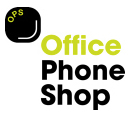Unified Communications brings together IP telephony and IP communications.
IP telephony is a collective term for VoIP services, i.e. voice calls over the internet and features found traditionally on a PBX phone system, such as call hold, transfer and forwarding, as well as conference calling.
IP communications encompasses business communication applications such as unified messaging, integrated contact centres and multi-media conferencing using voice, data and video.
Businesses today operate using a variety of different technologies, adopted as they evolve. Most operate separately, for example, voice calls using traditional phone lines, emails, fax machines, live chat, video conferencing, mobile office solutions. Bringing these together means just one service instead of multiple, as well as minimal hardware. It allows users to manage all their communications’ needs in one place, being able to access their accounts from any device in the same way as if they were operating a PC.
What are the advantages?
- One number to call regardless of the device used means that individuals can stay connected with the office and/or with customers wherever they are. It also ensures seamless transfer of data between devices. Having one supplier, one number and therefore one bill, also reduces costs.
- The use of SIP trunking helps to reduce costs. There is no need to transfer calls between mobile networks and the WLAN. In addition, using web collaboration means that employers do not need to spend time out of the office travelling for meetings.
- Unified communications includes real time messaging and presence indicators, as well as web collaboration for real time interaction with customers. This includes using live chat, using both voice and text, as well as other web-based tools for generating sales and revenue. Emails, SMS video, voice and fax services are all accessible via the one mailbox.
As more and more companies convert to cloud or hosted services, the adoption of unified communications is likely to increase.

